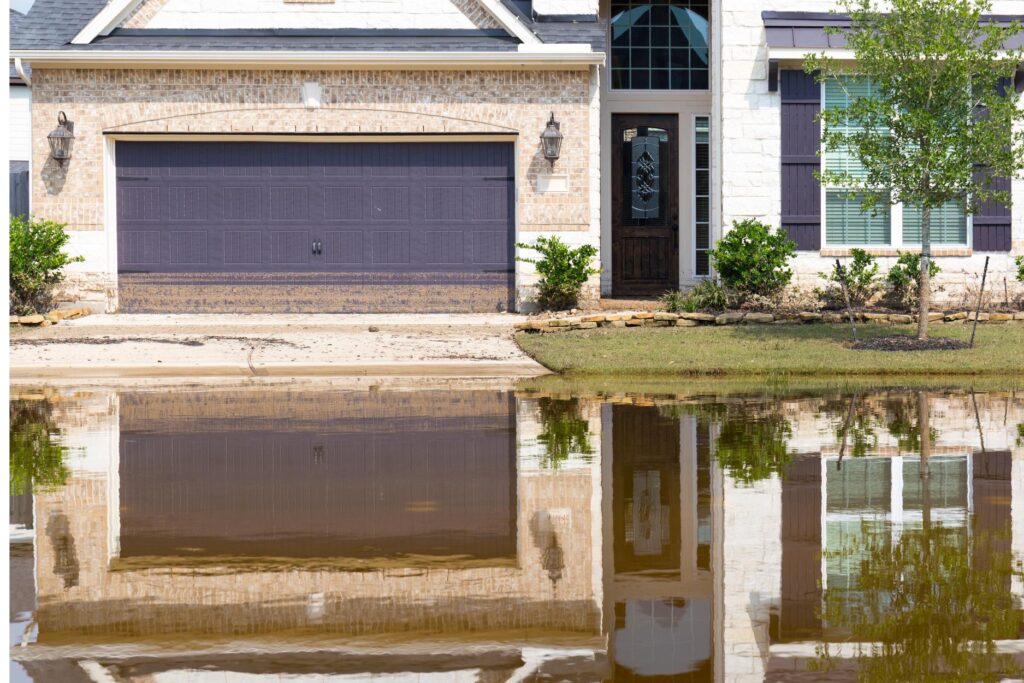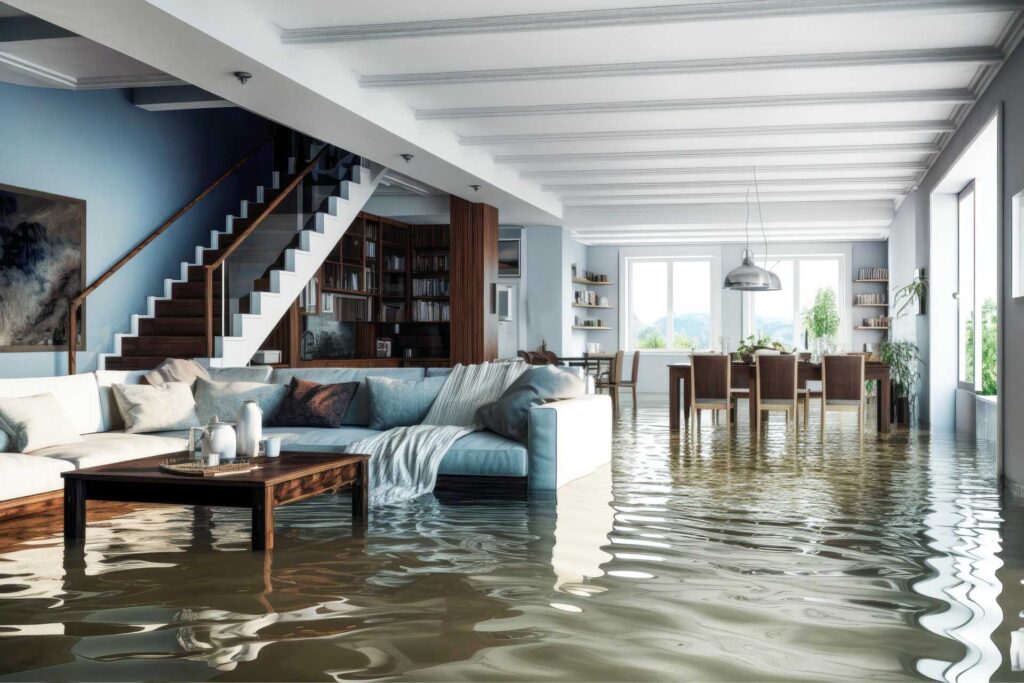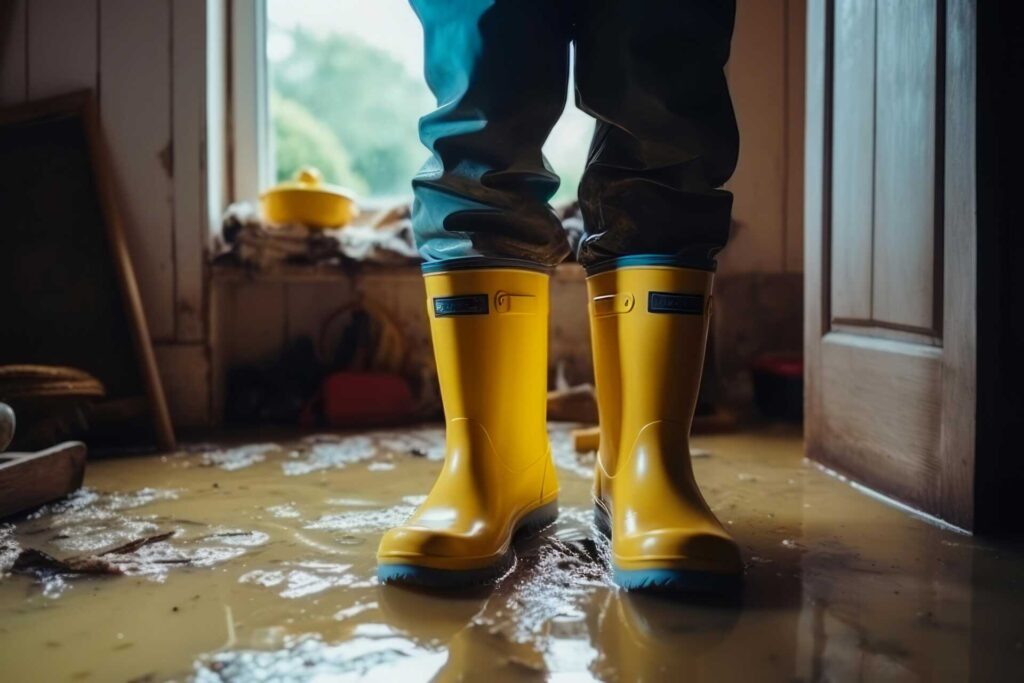Contents
Water damage can lead to hidden problems that escalate if left unchecked. Many homeowners don’t realize that simple, proactive measures can save them significant repair costs. By identifying the source of the leak and using DIY techniques, you can minimize damage effectively. But what are the best methods to tackle this issue without breaking the bank? Let’s explore some practical solutions that can keep your home safe and dry.
Key Takeaways
- Identify and repair the water source promptly to prevent further damage and reduce repair costs.
- Utilize DIY methods like scraping, repainting, and cleaning with vinegar for minor water damage fixes.
- Use fans and dehumidifiers to accelerate drying and minimize mold growth economically.
- Use affordable tools like moisture meters to target wet areas for effective drying and repair.
- Document all damage and repairs with photos for insurance claims or future reference to maximize potential reimbursements.
Assessing the Extent of Water Damage
How can you quickly determine the extent of water damage in your home? Start by conducting a thorough property inspection. Look for visible signs like water stains, mold, or warped flooring, which can indicate where the water’s affected.
Don’t forget to check hidden areas, such as behind appliances and under sinks. Use a moisture meter if you have one; it’ll help you pinpoint moisture levels and identify damage that’s not immediately visible.
Next, assess the materials involved. Drywall, insulation, and wood are particularly susceptible to water damage. Pay attention to any musty odors, as they can signal mold growth.
Document your findings; this will be helpful for insurance claims or when seeking professional help.
A proper water damage assessment is vital in deciding the next steps for repair. Understanding the extent of the damage ensures that you take the right actions to restore your home effectively.
DIY Repair Techniques for Minor Damage
When you notice minor water damage, your first step is to evaluate the affected areas to determine the extent of the issue.
Once you’ve identified the problem, you can use simple repair methods to fix it, often with just a few essential tools.
Let’s explore how to tackle these repairs effectively and efficiently.
Assessing Water Damage
Although water damage can seem intimidating, evaluating the situation is your first step toward effective DIY repairs.
Start with water source identification; determine where the water is coming from. This could be a leaky pipe, an overflowing sink, or roof leaks.
Once you’ve pinpointed the source, focus on damage severity evaluation. Check affected areas for signs like discoloration, warping, or mold. It’s crucial to assess how extensive the damage is, as this will guide your repair efforts.
Don’t forget to document what you find; taking photos can be helpful for future reference or insurance claims.
Simple Repair Methods
After evaluating the water damage, it’s time to tackle some simple repair methods for minor issues. You can use some creative solutions and innovative techniques to restore your space effectively. Here are a few DIY techniques to contemplate:
| Issue | Solution | Tips |
|---|---|---|
| Peeling Paint | Scrape and repaint | Choose moisture-resistant paint |
| Minor Wall Stains | Clean with vinegar solution | Test on a small area first |
| Damp Carpets | Dry with fans | Use a dehumidifier too |
| Mold Spots | Apply a bleach solution | Clean with a vinegar solution |
| Leaky Faucet | Turn off the water supply first | Wear gloves and a mask |
These methods can help you feel empowered while saving money. Remember, you’ve got this!
Essential Tools Needed
To tackle minor water damage repairs effectively, having the right tools on hand is essential.
Start with a wet/dry vacuum to remove standing water quickly. You’ll also need a dehumidifier to help dry out the area and prevent mold growth.
Gather basic hand tools like a screwdriver, utility knife, and pliers for any repairs. Don’t forget safety gear—gloves and a mask—to protect yourself from potential hazards.
A moisture meter can help you assess the extent of the damage, ensuring you address all affected areas.
Finally, consider acquiring patching materials like spackle or drywall for wall repairs.
With these essential tools, you’ll feel confident in managing water damage and restoring your home.
Cost-Effective Water Extraction Methods
When dealing with water damage, you have options for extraction that won’t break the bank.
You can try DIY techniques to manage smaller issues or consider affordable professional services for larger problems.
Understanding these cost-effective methods can save you time and money while ensuring your home stays safe and dry.
DIY Water Extraction Techniques
If you find yourself facing water damage, employing DIY water extraction techniques can save you both time and money.
Start by using a sump pump to remove large volumes of standing water quickly. It’s essential for minimizing damage and is often an affordable rental.
Next, grab a moisture meter to assess the humidity levels in your home. This tool helps you identify wet areas that need extra attention.
For smaller spaces, try using towels or mops to soak up residual water. Fans and dehumidifiers can further speed up the drying process.
Affordable Professional Services
Finding affordable professional services for water extraction can be a game-changer in dealing with water damage. You don’t have to break the bank to restore your home.
Many companies offer budget-friendly repairs that don’t compromise on quality. Look for professionals who use cost-effective materials and proven techniques to ensure efficient water removal and drying.
It’s crucial to choose services that provide transparent pricing and free estimates, so you know exactly what to expect. By opting for reliable professionals, you can save time and stress, knowing your home is in good hands.
Connect with local specialists who understand your needs, and you’ll find that tackling water damage can be both manageable and economical.
Affordable Drying Solutions for Homeowners
Although water damage can be overwhelming, affordable drying solutions are within reach for homeowners. By using the right drying techniques and affordable equipment, you can restore your home without breaking the bank.
Here are three practical steps you can take:
Fans and Dehumidifiers: Invest in fans and dehumidifiers, which are essential for speeding up the drying process. These affordable tools can greatly lower humidity levels.
Natural Ventilation: Open windows and doors to encourage airflow. This simple technique can enhance the drying process and is completely free!
DIY Absorbents: Use towels, sponges, or even cat litter to soak up excess water. It’s an effective, low-cost way to manage minor spills.
Budget-Friendly Mold Prevention Strategies
After addressing water damage, it’s vital to focus on mold prevention to protect your home and health.
Start by incorporating mold-resistant materials during repairs or renovations. These materials can greatly reduce mold growth, creating a safer environment for you and your family.
Next, prioritize humidity control. Keep indoor humidity levels below 60% by using dehumidifiers or air conditioners. Proper ventilation in bathrooms and kitchens is important, so consider installing exhaust fans to help reduce moisture buildup.
Regularly check for leaks around pipes, windows, and roofs. Fixing these issues promptly can prevent mold from taking hold.
Additionally, ensure your home has adequate airflow by rearranging furniture and opening windows when weather permits.
With these budget-friendly strategies, you can effectively deter mold growth, safeguarding your home and promoting a healthier space for everyone.
Finding Reliable Restoration Services on a Budget
When you’re dealing with water damage, it’s crucial to secure reliable restoration services without breaking the bank.
You don’t have to feel overwhelmed; here are some budget restoration tips that can help you find trustworthy providers:
Seek recommendations: Ask friends or family for referrals. Personal experiences often lead you to reliable services.
Use reliable service directories: Websites like HomeAdvisor or Angie’s List can help you find vetted professionals in your area.
Get multiple quotes: Don’t settle for the first estimate. Compare prices and services to make sure you’re getting a fair deal.
Conclusion
Tackling water damage doesn’t have to break the bank. By taking proactive measures and using DIY techniques, you can save your home and your wallet. Think of your home as a fortress; with regular inspections and affordable repairs, you’re fortifying it against future threats. Remember, a little effort now can prevent a flood of expenses later. Stay vigilant and keep your living space safe, dry, and comfortable without overspending.




